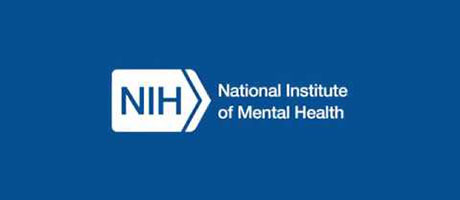
(5-xx-21) Dr. E. Fuller Torrey has spent much of his career writing and researching Schizophrenia. He is the author of Surviving Schizophrenia: A Family Manual, long-considered the bible about the disease. Guest blogs reflect the opinion of the author.
The NIMH Saga Continues: How Many People Have Schizophrenia?
By E. Fuller Torrey, MD
Since attempting to make 2 million individuals with schizophrenia disappear in 2017, the National Institute of Mental Health (NIMH) has continued to rely on studies that directly contradict its own claims, thus embarrassing itself yet again.
How many people in the United States have schizophrenia?
This should be a straightforward question for the nation`s leading mental illness research agency. But it is not.
The question was recently raised again by a study from the Johns Hopkins Bloomberg School of Public Health. Based on Medicare and Medicaid claims, and using the 2010 census data, it reported that the one year prevalence of schizophrenia in the US was 1.62% among adults (ages 18 and over) or 3.8 million individuals. (1) * The author of the Johns Hopkins study acknowledged that it did not include individuals incarcerated in jails or prisons. If we were to add these additional individuals based on other studies, the total number of people with schizophrenia would be about 4 million (2).
But wait! NIMH claims there are fewer than 1 million people with schizophrenia in the US, a fourfold difference between the estimates. What is going on here?
NIMH Changes How It Counts in 2017. Why?
To answer that question one must go back to the Epidemiologic Catchment Area (ECA) study funded by NIMH and carried out at five US sites from 1980 to 1985. At each site at least 3,000 adults living in households and 500 individuals living in mental hospitals, nursing homes, prisons and other institutions were interviewed, then surveyed by telephone six months later and re-interviewed six months after that. The ECA results have been widely regarded as the most accurate data on the prevalence of mental illnesses in the US.
For schizophrenia the study initially reported a one year prevalence of 1.1%, or 2.6 million individuals with schizophrenia (3). In 1993 the ECA results were reanalyzed when Congress requested updated data and the prevalence of schizophrenia at that time was reported to be 1.5% of adults, or 3.5 million individuals. (4)
For 32 years, from 1985 until 2017, NIMH used the initial ECA result of 1.1% of adults as the official prevalence of schizophrenia.
Then in 2017, for reasons discussed below, NIMH abruptly and without public discussion or public notice decreased the official prevalence of schizophrenia to 0.3% of adults, or 704,000 individuals. The 0.3% figure was justified by citing a household survey of 9,282 respondents carried out in 2000-2003 (5).
Only Counted Americans Living At Home Who Acknowledged They Were Ill
The study included only people living at home who acknowledged that they had schizophrenia; it did not include anyone in hospitals, nursing homes, group homes, jails, prisons, or who were homeless. It also did not include the 29% of people living at home who refused to participate in the survey, presumably including many people with paranoid schizophrenia. In addition, the screening instrument used in this self-report survey had been shown by another NIMH-funded study to be particularly bad at diagnosing schizophrenia (6). Thus, almost three quarters of individuals previously claimed by NIMH to have schizophrenia, almost 2 million people, were made to disappear.
This federal feat of magic was ridiculed by us in the Psychiatric Times (“Hocus-Pocus: How the NIMH Made 2 Million People with Schizophrenia Disappear”) (7) and the Wall Street Journal (“Where Did the Schizophrenics Go?”) (8).
Caught red-handed, Dr. Joshua Gordon, the Director of NIMH, acknowledged that the 0.3% prevalence figure for schizophrenia did not “reflect the full spectrum of knowledge available in the relevant literature” (9). But rather than proposing a new prevalence figure for schizophrenia, NIMH decided to combine schizophrenia with “other psychotic disorders”, which would include bipolar disorder with psychotic features and major depressive disorder with psychotic features, and proposed a range of prevalence “between 0.25% and 0.64%” of the population for psychoses as a whole.

Dr. Joshua Gordon changed counting procedures
This translates to between 772,000 and 2.0 million people for the combined diagnoses, and has been the official NIMH estimate since 2018.
Schizophrenia is the only psychiatric diagnosis on the statistics section of the NIMH website that has a range for its prevalence; every other psychiatric diagnosis is given a precise prevalence number.
This suggested prevalence range for the 3 psychotic diagnoses combined is as problematic as NIMH’s original attempts to minimize the number of people with schizophrenia . According to NIMH the total number of people with bipolar disorder and major depressive disorder is 23.2 million; approximately one quarter of these are said to have psychotic features, which would be 5.8 million people. These two diagnoses alone, therefore, are almost 3 times the 2.0 million upper limit of the prevalence range suggested by NIMH for all 3 diagnoses. If taken literally, this implies that NIMH thinks that schizophrenia no longer exists in the U.S. However, we should give NIMH the benefit of the doubt and assume they don’t really mean that. We will assume that what NIMH is really trying to say, however awkwardly, is that schizophrenia has a very low prevalence of 1 million or less.
The real problem with NIMH’s current prevalence claims for schizophrenia and other psychoses is that the studies cited by NIMH to support these claims in fact do not support them. NIMH references three studies. The first, referred to above, is the survey that only counted people living at home who acknowledged that they had schizophrenia. This would account for only a small percentage of the total number of people with this disease. The second study, carried out in 2005- 2008, was also restricted to individuals living at home and also used a screening tool known to be particularly bad at diagnosing schizophrenia. (10)
Nevertheless the study identified 348 individuals with schizophrenia which, according to the authors, “represents 3.03 million noninstitutionalized US residents” with that diagnosis. Since this study did not include any individuals in hospitals, nursing homes, group homes, prisons, jails etc, adding these would increase the total number of people with schizophrenia to close to 4 million.
Nearly Half Of Americans With Schizophrenia Not Getting Help
The third study used by NIMH to support the combined prevalence estimate was a 2006 study using data from Medicaid, Medicare, private insurance companies, and the Veterans Administration. (11) The study estimated the number of people with treated schizophrenia in the US to be 0.53% of the total population, or approximately 1.7 million individuals.
However this figure included only individuals who were receiving treatment. NIMH itself has estimated that 45% of individuals with schizophrenia in the US are not being treated (12), and there are at least four other studies consistent with this estimate. The additional 45% of individuals with schizophrenia who are not being treated would total about 1.4 million people; combined with those who are being treated would bring the total to 3.1 million people with schizophrenia.
Why is NIMH so eager to minimize the number of people with schizophrenia?
To answer this question one must understand how Washington works. Most NIH Institute directors have a limited interest in what average citizens think about their research portfolios. By contrast, they have a great interest in what members of Congress think because that is the source of their funds.
Since 2008 Congress has attempted to make NIH research expenditures more transparent. Congress first ordered NIH to set up a publicly available database, the Research, Condition, and Disease Categorization (RCDC) system, which allows the public to ascertain the amount of research funds being spent by NIH on any disease. In 2016 Congress further mandated that NIH must add the prevalence of each disease to the RCDC database. This then allows anyone with a computer to ascertain how much is being spent by NIH per patient on any disease.
Doing the math for research expenditures on schizophrenia in 2017, NIMH would have realized that it did not look good. For example, expenditures per patient for Parkinson’s disease and Alzheimer’s disease were almost twice as high as those for schizophrenia. There were two possible solutions to NIMH’s problem – spend more money on schizophrenia research or decrease the number of people said to have this disease.
But NIMH was not interested in spending more money on schizophrenia research.
Since the turn-of-the-century it has shifted its research resources increasingly away from clinical research to increasing basic brain research. Prior to that time basic and clinical research shared resources approximately equally but by 2015, according to then NIMH director Thomas Insel, clinical research was getting only 10% of the funds. (13) As detailed elsewhere , between 2003 and 2019 NIMH support for pharmacological treatment trials for schizophrenia, bipolar disorder, and major depressive disorder decreased by a stunning 90%. (14)
For the years 2016 to 2019 all NIMH research spending on schizophrenia, bipolar disorder, and depression decreased by 18%, 25%, and 3% respectively as a percentage of the total NIMH budget. In the current NIMH Strategic Plan for Research for 2020- 2024 basic research on genetics and neural circuits received 92 mentions compared to five for schizophrenia, one for bipolar disorder, and none for major depressive disorder.
Lack of Interest in Schizophrenia
Still another indication of the lack of NIMH interest in ascertaining the true number of people with schizophrenia was a 2018 offer by the Substance Abuse and Mental Health Services Administration (SAMHSA) to jointly fund with NIMH a major study on the prevalence of serious mental illnesses. Although NIMH has the primary responsibility for such studies, it was not interested and rejected SAMHSA`s generous offer.
In summary, NIMH has attempted to minimize the number of people with schizophrenia in the US to 1 million or less. The only study that supports such a number is a study that only counted people living at home who acknowledged that they had schizophrenia. The other two studies cited by NIMH in support of its claim contradict it, one suggesting that there are approximately 3.1 million people with schizophrenia and the other suggesting approximately 4 million.
These higher estimates are consistent with the recent Johns Hopkins study which reported the total number of people with schizophrenia to be approximately 3.8 million, not including those incarcerated (1). They are also consistent with the revised ECA estimate of 3.5 million as provided to Congress by NIMH in 1993 (4). It seems clear that, despite the wishes of NIMH, the true prevalence of schizophrenia in the US is between 3 and 4 million people.
The true prevalence of schizophrenia and other mental disorders is important.
The information should be used to help allocate research resources and it is also used to allocate mental health services funds under the SAMHSA federal Block Grant. NIMH should be required to change the information on its website to more accurately reflect what is known about the prevalence of schizophrenia. Congress should also require that prevalence studies for serious mental illness be undertaken at regular intervals, inclusive of individuals who are incarcerated or homeless to achieve a more accurate prevalence number.
The handling of the schizophrenia prevalence question by NIMH has been, and continues to be, an embarrassment to American psychiatry, to the National Institutes of Health, and to NIMH. Doesn’t NIMH have among its 563 employees anyone who knows basic epidemiology?
It is especially an embarrassment to Dr. Joshua Gordon, the Director of NIMH who, when he was initially appointed in 2016, stated that his highest priority was to support good science. It is hoped that his handling of this issue is not representative of good science.
About The Author:

Dr. E. Fuller Torrey
Dr. Torrey is the author of American Psychosis and the founder of the Treatment Advocacy Center.
Footnotes:
** All population figures in this report are based on the 2010 census data to make the results comparable to the Johns Hopkins study.
References
- Mojtabai R. Estimating the prevalence of schizophrenia in the United States using the multiplier method. Schizophr Res. 2021 Mar 2;230:48-49. doi: 10.1016/j.schres.2021.02.010.
- Torrey EF, Zdandowitz M, Kennard AD, et al. The treatment of persons with mental illness in prisons and jails: a state survey. Treatment Advocacy Center. April 8, 2014. https://www.treatmentadvocacycenter.org/storage/documents/treatment-behind- bars/treatment-behind-bars.pdf
- Regier DA, et al. The de facto US mental and addictive disorders service system. Epidemiologic catchment area prospective 1-year prevalence rates of disorders and services. Arch Gen Psychiatry. 1993 ;50(2):85-94. doi:0.1001/archpsyc.1993.01820140007001.
- Health care reform for Americans with severe mental illnesses: report of the National Advisory Mental Health Council. Am J Psychiatry. 1993 Oct; 150(10):1447-65. doi: 10.1176/ajp.150.10.1447.
7
- Kessler RC, et. The prevalence and correlates of nonaffective psychosis in the National Comorbidity Survey Replication (NCS-R). Biol Psychiatry. 2005 Oct 15;58(8):668-76. doi: 10.1016/j.biopsych.2005.04.034.
- Eaton WW, et al, Case identification in psychiatric epidemiology: a review. Int Rev Psychiatry. 2007 Oct;19(5):497-507. doi: 10.1080/09540260701564906.
- Torrey EF and Sinclair E. Hocus Pocus: How the NIMH made 2 million people with schizophrenia disappear. Psychiatric Times, March 14, 2018
- Torrey EF and Simmons W. Where did all the schizophrenics go? Wall Street Journal. March 26, 2019
- Gordon JA. On the prevalence of schizophrenia and transforming care through research. Psychiatric Times. 2018; 35 (3):11.
- Desai PR, et al., Identifying patient characteristics associated with high schizophrenia- related direct medical costs in community-dwelling patients. J Manag Care Pharm. 2013 Jul-Aug;19(6):468-77. doi: 10.18553/jmcp.2013.19.6.468.
- Wu EQ, Shi L, Birnbaum H, Hudson T, Kessler R. Annual prevalence of diagnosed schizophrenia in the USA: a claims data analysis approach. Psychol Med. 2006 Nov; 36(11):1535-40. doi: 10.1017/S0033291706008191.
- National Institute of Mental Health. (2016). Bipolar disorder among adults. Retrieved from: https://www.nimh.nih.gov/health/statistics/prevalence/bipolar-disorder-among- adults.shtml
- Markowitz JC. There is such thing as too much neuroscience. New York Times, October 14, 2016.
8
14. Torrey et al. The continuing decline of clinical research on serious mental illnesses at NIMH. Psychiatric Services. Published online April 6, 2021. https://ps.psychiatryonline.org/doi/full/10.1176/appi.ps.202000739



